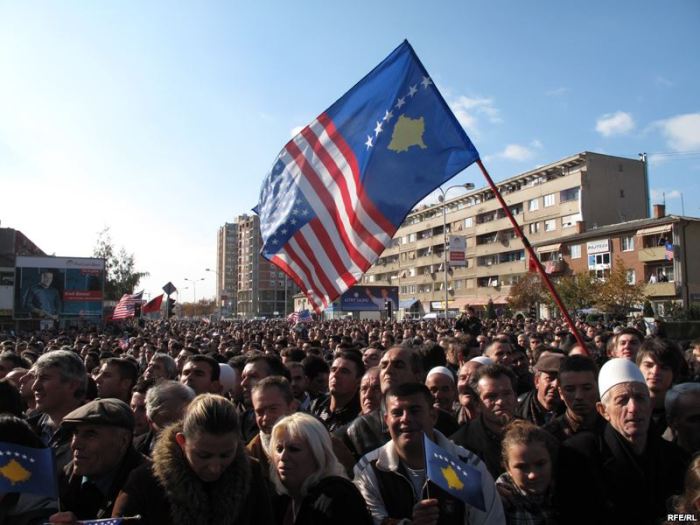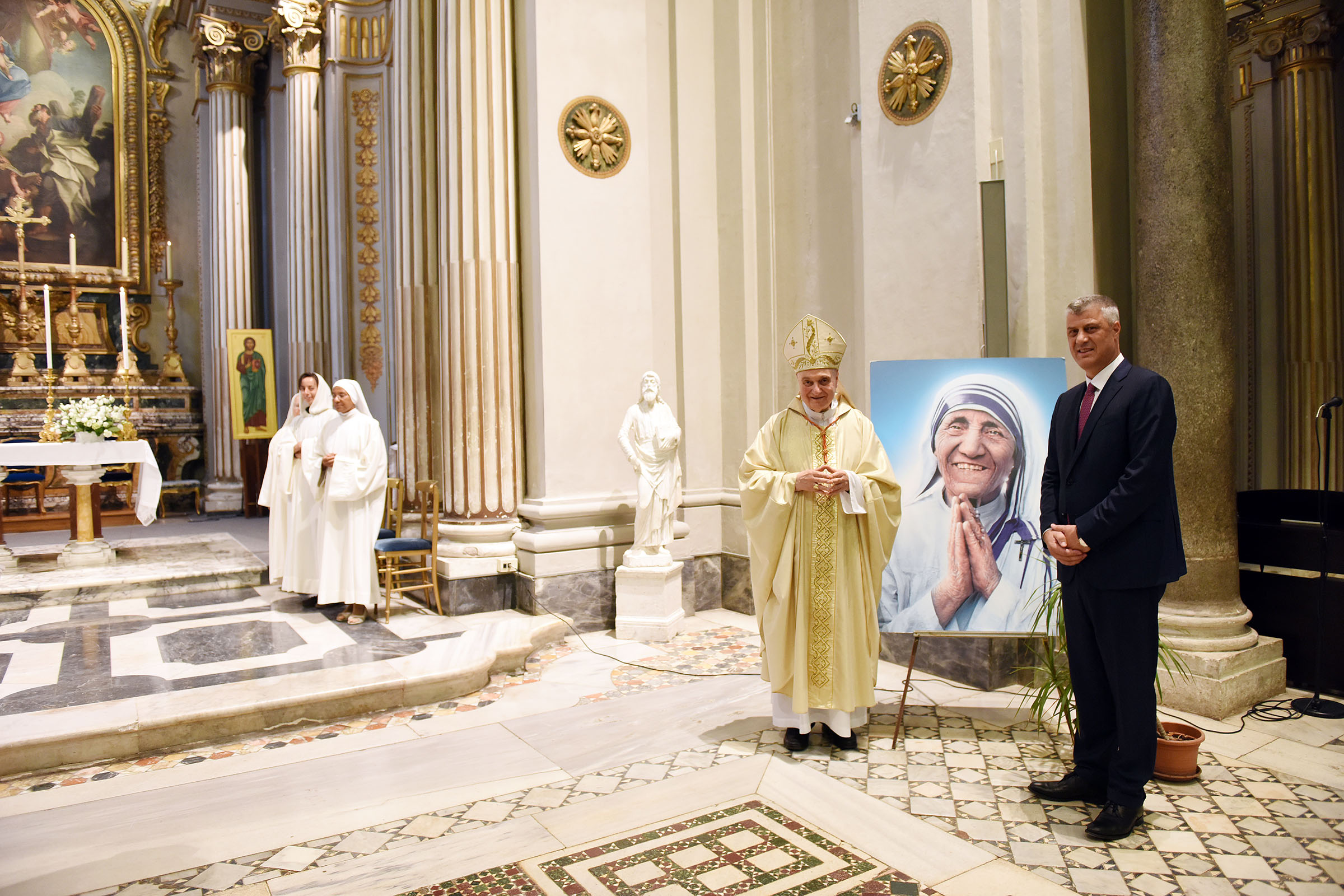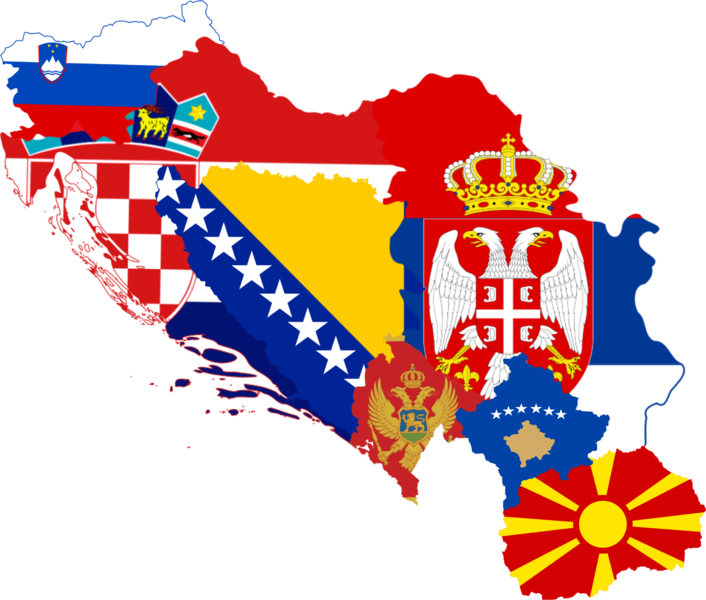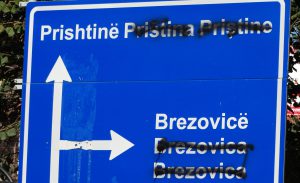
Views: 1585

Autism as the political driving force
As a matter of very historical fact, Kosovo-Metochia’s ethnic Albanians never accepted the state of Yugoslavia as their own state, nor did they ever recognize the country of Serbia as their homeland. Nevertheless, two important points have to be noticed in regard to this phenomenon. As it is quite known, it is a common feature of the highlanders in general. The Yugoslav and Albanian Dinaric highlanders, in fact, never historically accepted fully any kind of state as their own, for which they would feel any sincere responsibility. It concerns, for instance, the Montenegrins regarding the Ottoman Empire and Yugoslavia, or the Herzegovinians regarding the Ottoman Empire, Austria-Hungary, and Yugoslavia as well. Those nations who have been living in well-organized states cannot, in principle, appreciate such mentality of the highlanders, but it is the natural consequence of their secular, even millennia-long quasi-isolation.[1] It is this which, among other factors internal and external, proved to be fatal for the Balkans and its disputes for the last centuries. One may understand the inability of the Western politicians and sociologists to realize that the Albanian Question is not a matter of standard politics, but is more submerged into anthropology, if not even into pure biology. They cannot force themselves to believe they have to deal with a traditional society in Europe even partially civilized and on many occasions barbaric.[2]
In his enlightening book, the Italian author, journalist Paolo Rumiz described the stunning feeling while visiting the Dalmatian coast and Herzegovina in the 1990s.[3] A Dalmatian place he visited turned out an almost replica of a typical Italian town across the Adriatic Sea, in many relevant respects. Dalmatia is generally an integral part of the Mediterranean region and its civilization and culture.[4] However, only several kilometers far away, across the mountainous range of the Dinaric chain (the Dinaric Alps), lies Dalmatinska Zagora, a typical Dinaric area in West Herzegovina. Few kilometers separate these two regions in space, but a hundred years in time, as the journalist from Trieste, an expert of West Balkans, found. Though the Dalmatians are of mixed ethnic origin (the Roman, Illyrian, Slavic, Italian, etc.), they belong essentially to the Romanic cultural milieu, whereas the Herzegovinians have retained much of the ancient Illyrian inheritance, including their belligerent mental structure. It was them who started those bloody wars in ex-Yugoslavia in 1991−1995, as it has been well described by the same author, Paolo Rumiz, in his revealing book Mascere per un Massacro.[5] Equally, it was North-Albania highlanders who settled Central Albania, Kosovo-Metochia, and West Macedonia, who became the troublemakers in these regions and made West Balkans the hot spot on the modern political global scene.[6]
The Dinaric highlanders have never mixed with the lowlanders easily, but the case of the Albanians and non-Albanians at Kosovo-Metochia appears even more disturbing, in particular concerning the Serbian-Albanians’ relationships. The difference between the mentality of the Slavophone Dinaric highlanders and the Slavic population in ex-Yugoslavia has always been well hidden by the common language, but this façade is absent when considering the ethnic Albanians and non-Albanians in the region. Hence, on the layer of historical memories, one has to add another barrier − a linguistic one. The latter has always made the indigenous population experience ethnic Albanians as alien people, which made the latter even more reluctant to accept the relevant states as their own. This “conflict of interests” has resulted in the rising animosities between the Albanian and non-Albanian populations in the surrounding countries. The latter ended in armed rebellion in Serbia in 1998−1999 (the Kosovo War) and the Former Yugoslav Republic of Macedonia (the FYROM) in 2001.
Who financed Kosovo-Metochia?
The first serious challenge to the post-WWII Yugoslavia was the Albanian rebellion in Kosovo-Metochia in 1944/1945, which started at the Drenica Valley. The next rioting came in the famous 1968, marked with students’ unrests all over Europe. These unrests started in West Europe, in particular, France and Germany, and spread to East Europe, but more as the reverberations of West European students’ revolts. A British Guardian journalist visited at that time major Yugoslav university centers, including Priština in Kosovo-Metochia as well. He was prepared to see students demanding a more liberal way of life and study, liberal society, etc., as was the case in Europe at the time. However, instead, he found in Priština an enormous crowd of young people, rushing through the streets and shouting for the “liberation of Kosovo”, against the Serbian government, etc. He was astonished to see the (ethnic-Albanian) dean of the university whose appearance differed, as he put it, completely from the faces he met in Belgrade, Zagreb, and Ljubljana. What he witnessed was the attempt of the Albanian politicians to take advantage of the students’ mood in Europe in order to advance their political aims at South Serbia’s autonomous province of Kosovo-Metochia.
The next major rioting took place in the spring of 1981. The situation in Kosovo-Metochia was unstable already during J. B. Tito’s authoritative rule, but when he died in1980, the Albanians felt no further obligations towards their county. The riots engaged a huge number of Albanians, mainly young, students, teenagers, led by skillful political activists. The question is how did it start?
Before the motivations for the rioting are going to be taken into consideration, some short elaboration of the demographic situation in this province must be made. Kosovo-Metochia’s population, consisting predominately of the ethnic Albanians due to different reasons, was undergoing a real demographic explosion, with the fertility rate about six-time bigger than in the rest of Serbia (and ex-Yugoslavia, for that matter). Incidentally, since Kosovo-Metochia’s population shared 1/6 of the total one of Serbia, it practically meant that on every non-Albanian newly born child came one Albanian.[7]
It is quite obvious that no state, however rich it may, is able to absorb such an influx of young people and provide them with jobs, among other things. What Kosovo-Metochia’s politicians did was to let almost all kids who finished secondary schools enroll in the university. Therefore, they simply created an enormous number of false students and consequently an enormous mass of jobless young bachelors. The nominally poorest region in Europe had by far the largest percentage of students out of the overall population of the Old Continent.
Those economically passive young people had to be materially supported. This burden fell formally on the Yugoslav federation, but practically only on Serbia. In other words, the Yugoslav government established a federal fund for supporting under-developed republics including Kosovo-Metochia as well. Every republic had to contribute to the fund according to its economic strength and the overall sum is then distributed to the consumers. It happened that the amount allotted to Kosovo-Metochia matched exactly the sum which Serbia was depositing in the common fund for the support of underdeveloped parts of the country. Consequently, it was exactly Serbia which provided economic help to Kosovo-Metochia alone. This financial contribution was used for the building of the infrastructure, health service, education system, and for the principal public needs in general. It included the material support for Kosovo-Metochia’s students too.
Why the Kosovo Republic?
However, one day in 1981 an Albanian student threw away in a student refractory his tray, shouting that he was no longer to stand such bad nourishing. Whether it was just a spontaneous gesture or a well-prepared political incident is still unknown, but it is, in fact, of minor importance for us. But what is important is that the rest of the students accepted the challenge, went out to the streets, shouting against Serbia’s authorities and their alleged economic exploitation of the province, etc. Slogans like “Kosovo Republic” expressed the principal demands by the crowds, which poured into Priština’s streets as well as in other bigger towns in the province. Therefore, the social frustration of the overpopulated province by the youth has been cunningly channeled into the political demands with the ultimate goal to separate Kosovo-Metochia from Serbia and to include it into a Greater Albania – a project which existed since the First Albanian (Islamic) Prizren League in 1878−1881.[8]
Here, a question of why did the 1981 Albanian riot in Kosovo-Metochia happen must be addressed shortly. It was almost immediately after J. B. Tito’s death and the authority he possessed was no longer present.[9] Nonetheless, one more acute reason prompted the riot: the planned census in ex-Yugoslavia. It used to be carried out every ten years, the first year in a decade (1961, 1971, and now in 1981). But why the Albanians in Kosovo-Metochia were afraid of the census? A matter of fact was that the previous ones (in 1961 and 1971) were practically improvised there and very unreliable, indeed and, therefore, it left much room to play with numbers, which used to be manipulated by the provincial Albanian politicians. Their aim was to prove that the Albanians constituted the overwhelming majority in the province, which should provide them with the right to rule and ultimately secede from Serbia and Yugoslavia. The political instrument to finally achieve this goal was to get a status of the republic for Kosovo-Metochia. Nevertheless, in regard to the last official census in 1971, all statistical figures about the Socialist Autonomous Province of Kosovo (as the official name) are, in fact, rough estimates, and should be taken with a grain of salt. In addition, the census issue concerns not Kosovo-Metochia only and not ethnic Albanians exclusively as the same situation appears in the FYROM, where the official figure of the ethnic Albanians percentage (in 1996) was 23%, whereas the latter claim 40%. Since the Macedonian Roma are self-estimated up to 17%, if the ethnic-Albanian figure is taken seriously, it turns out that Macedonia is populated by any nationality except the Slavophone Macedonians. A similar situation is with the Roma in Serbia, who claim to be as numerous as 800.000, whereas the official figure provides half of that number. However, this “war by numbers” is not innocent as it might seem at first sight, for the very reason that behind the census’ numbers march, in fact, political demands.
But why the “Kosovo Republic?” At that time Kosovo-Metochia de facto had already from 1974 the status of a republic, except for the right to secede. Therefore, in fact, this demand was interpreted as pushing towards independence via the formal route. But there was another, the perhaps even stronger motive for demanding the status of the republic within the Yugoslav (con)federation system. The federal fund was dedicated to “under-developed republics and Kosovo”, as it used to be repeatedly stated by the Yugoslav officials. However, which republics it referred to? To Bosnia-Herzegovina, Macedonia, and Montenegro. Serbia was, accidentally, within the average, neither developed nor underdeveloped, as a whole. It was the case with Central Serbia as well, with rich Vojvodina making a balance for underdeveloped KosoMet. However, neither of those republics was mentioned explicitly when referring to the federal fund, but “Kosovo” was. Kosovo-Metochia’s Albanians, as all Dinaric highlanders, are extremely sensitive and proud people (there are other terms, of course, from the sphere of psychology) and were much offended by being reminded that they depended on the rest of Yugoslavia what was, in fact, the real truth but in particular those who were aware that the financial help was provided practically by Serbia alone. The point was that by acquiring a status of the republic, they would cease to be singled out explicitly, by name.
Here it is the instance to ask why these riots appear so violent and what were real motivations, or causes, for being so frequent and insistent? After all, the Albanians are not the only “national minority” in Serbia.[10] In Vojvodina, the ethnic Hungarians were almost as numerous as the ethnic Albanians in Kosovo-Metochia in 1945. Two instances must be addressed here if one wants to make a parallel between these two populations and their behavior within the state in which they live:
- While the Hungarians in Serbia diminished their number from about 500.000 in 1945, to around 400.000 at present, the Albanians increased at the same period their population up to 1.700.000. However, these are just estimations that have been used by officials, both the Yugoslav and external.
- The Hungarians appear to be a typical central European population, civilized and loyal citizens.[11] They are not, of course, quite satisfied by their position within Serbia and use every occasion to complain, but do it in a civilized, non-violent manner quite different from the Albanians. Anyway, they participated fully in the political life of both Serbia and ex-Yugoslavia.
Albanian terrorism and destruction of ex-Yugoslavia
The question is how did the Yugoslav authorities, first of all, the Serbian one, cope with this threat to the very state? They sent federal police forces to calm down rioted Albanian demonstrators. The same would do any other serious state in the world. However, the task turned out very difficult, indeed. Young people, frustrated and poisoned with terrifying hatred horrified even the skillful police forces. Reserve police forces from Central Serbia used to be sent to Kosovo-Metochia, but they were able to endure a short time there and were regularly withdrawn to recover, to be sent back again. It was like sending troops to East Front in WWII. Young reservists were traumatized by the horrifying violence and hatred they witnessed. The Albanian demonstrators beat everybody they met, journalists (domestic and foreign alike), photo-reporters, etc. It was more the expression of xenophobia than political demands. After some time, the federal forces retreated and the battleground was left only to the Serbians.[12]
The demonstrations were finally, nevertheless, brought to rest, but the riots reached their goal. Now, when looking back in retrospect, the riots in 1981 marked the beginning of the end of J. B. Tito’s Yugoslavia (Titoslavia) and for good reason as nobody felt comfortable in a state which contains the regions like Kosovo-Metochia. After those riots, many non-Albanians left the province and all republics apart from Serbia and Montenegro started to meditate of leaving the common state.[13]
If those bloody demonstrations delivered a serious blow to the federal state and Serbia in particular, the coup de grace was carried out a few years later. It was in the army casern at Paraćin, a town in Central Serbia, close to the highway E75 (from Belgrade towards Skopje and Athens). The garrison consisted of conscripts from all over Yugoslavia, as the general practice of the Yugoslav People’s Army (the YPA) was. The rationale for this was, first, the intention to move conscripts far away from their homes, second to mix various nationalities as much as possible, and third to enable young people to get acquainted with remote parts of their country. The second point was the most important, of course, and it worked well with all ethnicities in multiethnic Yugoslavia. All except ethnic-Albanians.[14]
Although the Albanians shared about 7% of the Yugoslav population, their share in the Yugoslav People’s Army was considerably bigger due to the demographic explosion. And while all other conscripts were making the company, the Albanians always kept apart, mixing only among themselves. They communicated with others only exceptionally and with great reluctance. In the courtyard of the Paraćin garrison, at free time, they used to gather in a corner and did not mix with the rest of the garrison. One night in 1987 (September 3rd), while all soldiers were sleeping one conscript Kosovo’s Albanian on the corridor night-guard duty, Aziz Keljmendi broke the weaponry room, took the machine rifle, rushed into a bedroom at 3 am and started shooting indiscriminately into the sleeping comrades. He killed four conscripts, wounded very badly 6 others.[15] Then he escaped from the garrison, running towards the highway, where his father, a Gastarbeiter in Germany, was supposed to wait on him in a car. The military policemen were, however, faster and killed him before he reached the highway.[16]
The 1987 Paraćin Massacre sealed the fate of ex-Yugoslavia. In a view of the generally hostile attitude of the Albanians toward both the Serbs and Yugoslavia, as illustrated by the fact that, according to the official record, between 1981 and 1988, some 241 illegal cells of the Albanian separatists were discovered within the YPA, with some 1.600 members among the enlisted men and officers (Aziz Keljmendi was one of them), the Yugoslav army was to be radically changed that, in fact, never really happened. However, the first step the Yugoslav authorities took was to exempt the ethnic Albanians from serving the Yugoslav People’s Army. Not only for fear that the incident might be repeated, but it was definitely clear to the authorities that the Albanians did not feel like real Yugoslav citizens and moreover were hostile to the rest of the population. Therefore, to teach the ethnic Albanians how to use weapons would mean the right-way suicide. Nevertheless, in fact, it was the psychological effect that was the most devastating as no Yugoslav mother would be willing any longer to send her son to serve in the YPA. As a very consequence, the road to disintegration was widely open, and when the joker in the personality of Slobodan Milošević appeared in the same year, he was readily put to use by other republics. They did not find it enjoyable to live in the state with the time-bomb ready to blast any minute – time bomb called Kosovo’s Albanians. The bomb was packed into the package of a Greater Albania with Kosovo-Metochia.
Ex-University Professor
Vilnius, Lithuania
Research Fellow at the Center for Geostrategic Studies
Belgrade, Serbia
www.geostrategy.rs
sotirovic1967@gmail.com
© Vladislav B. Sotirović 2024
Personal disclaimer: The author writes for this publication in a private capacity which is unrepresentative of anyone or any organization except for his own personal views. Nothing written by the author should ever be conflated with the editorial views or official positions of any other media outlet or institution.
[1] About the mentality of the Yugoslavs, see in [Владимир Дворниковић, Карактерологија Југословена, Београд: Просвета, 2000].
[2] For instance, according to the French traveler and observer Ami Boue, “The Albanians [of West Kosovo called Metochia] are a bastard race, mixed with much Serbian blood and their many tribes and children are all descendants of mixed marriages between the Serbs and the Albanians” [Ami Boue, Turquie d-Europe, Paris, 1840, Vol. II, 15. Original in the French language].
[3] Paolo Rumiz, “La Linea dei Mirtilli”, Il Piccolo, Trieste, 1993.
[4] About the Mediterranean civilization, see in [Peregrine Horden, Nicholas Purcell, The Corrupting Sea: A Study of Mediterranean History, Malden, Mass.: Blackwell Publishers, 2001; David Abulafia, The Great Sea: A Human History of the Mediterranean, Oxford−New York: Oxford University Press, 2011; David Abulafia (ed.), The Mediterranean in History, J. Paul Getty Museum, 2011].
[5] Paolo Rumiz, Maschere per un Massacro, Roma: Editori Riuniti, 1996.
[6] About the Albanian-Serbian relations in Kosovo-Metochia, see in [Душан Т. Батаковић, Косово и Метохија у српско-арбанашким односима, Друго допуњено издање, Београд: Чигоја штампа, 2006].
[7] See more in [Slađana Đurić, Osveta i kazna, Niš: Prosveta, 1998].
[8] See more in [Radoslav Gaćinović, „Prva Prizrenska Liga kao putokaz političkog nasilja nad Srbima u Staroj Srbiji“, Vojno delo, № 3, 2019, 326−341].
[9] About his critical biography, see in [Перо Симић, Тито феномен 20. века, Треће допуњено издање, Београд: Службени гласник, 2011].
[10] It has to be noted that even the very term “minority” appears pejorative and humiliating to the sensible highlander ears of the Albanians. Even without referring to the political aims, fast-breeding politics has the aim to eliminate this feeling, as a particular instance of the inferiority complex.
[11] On the history of the Hungarians, see in [László Kontler, Millennium in Central Europe: A History of Hungary, Budapest: Atlantisz Publishing House, 1999; Петар Рокаи, Золтан Ђере, Тибор Пал, Александар Касаш, Историја Мађара, Београд: CLIO, 2002].
[12] The Slovenians demanded to be paid additionally for taking part in dealing with demonstrations.
[13] An additional, and even crucial, reason for leaving the common state by Slovenia and Croatia was a decision by Belgrade to make a federal unit of Serbia to be equal with all other federal units in both political and economic terms and conditions. However, under the conditions of equal cooperation with Serbia, Ljubljana and Zagreb simply did not see any further benefits to stay in Yugoslavia.
[14] In practice, the language in public use either in Yugoslavia or the YPA was Serbo-Croat, which was the mother tongue of 75% of the population. To the Serbophone population, the Slovenian and Macedonian languages were practically unintelligible. However, by the law, no one language was proclaimed to be an official in the Socialist Federal Republic of Yugoslavia but on the federal level, there were five languages of administration. The most important of them was the Serbo-Croat. About this issue, see more in [Владислав Б. Сотировић, Социолингвистички аспект распада Југославије и српско национално питање, Нови Сад−Србиње: Добрица књига, 2007].
[15] Killed conscripts were Safet Dudaković, Srđan Simić, Goran Begić, and Hazim Džananović [Владислав Б. Сотировић, Огледи из југославологије, Виљнус: Штампарија Литванског едуколошког универзитета „Едукологија“, 2013, 190].
[16] According to some officials, he committed suicide. Aziz Keljmendi was buried in his village with all dignitaries of the national hero. The whole incident was presented to Kosovo-Metochia’s public as another contrivance of the Serbian authorities. The incident was not exploited in the Yugoslav public media posterior to its occurrence and it is still unclear to which extent the Serbian authorities were aware of its importance.

Origins of images: Facebook, Twitter, Wikimedia, Wikipedia, Flickr, Google, Imageinjection, Public Domain & Pinterest.
Read our Disclaimer/Legal Statement!
Donate to Support Us
We would like to ask you to consider a small donation to help our team keep working. We accept no advertising and rely only on you, our readers, to keep us digging the truth on history, global politics, and international relations.












